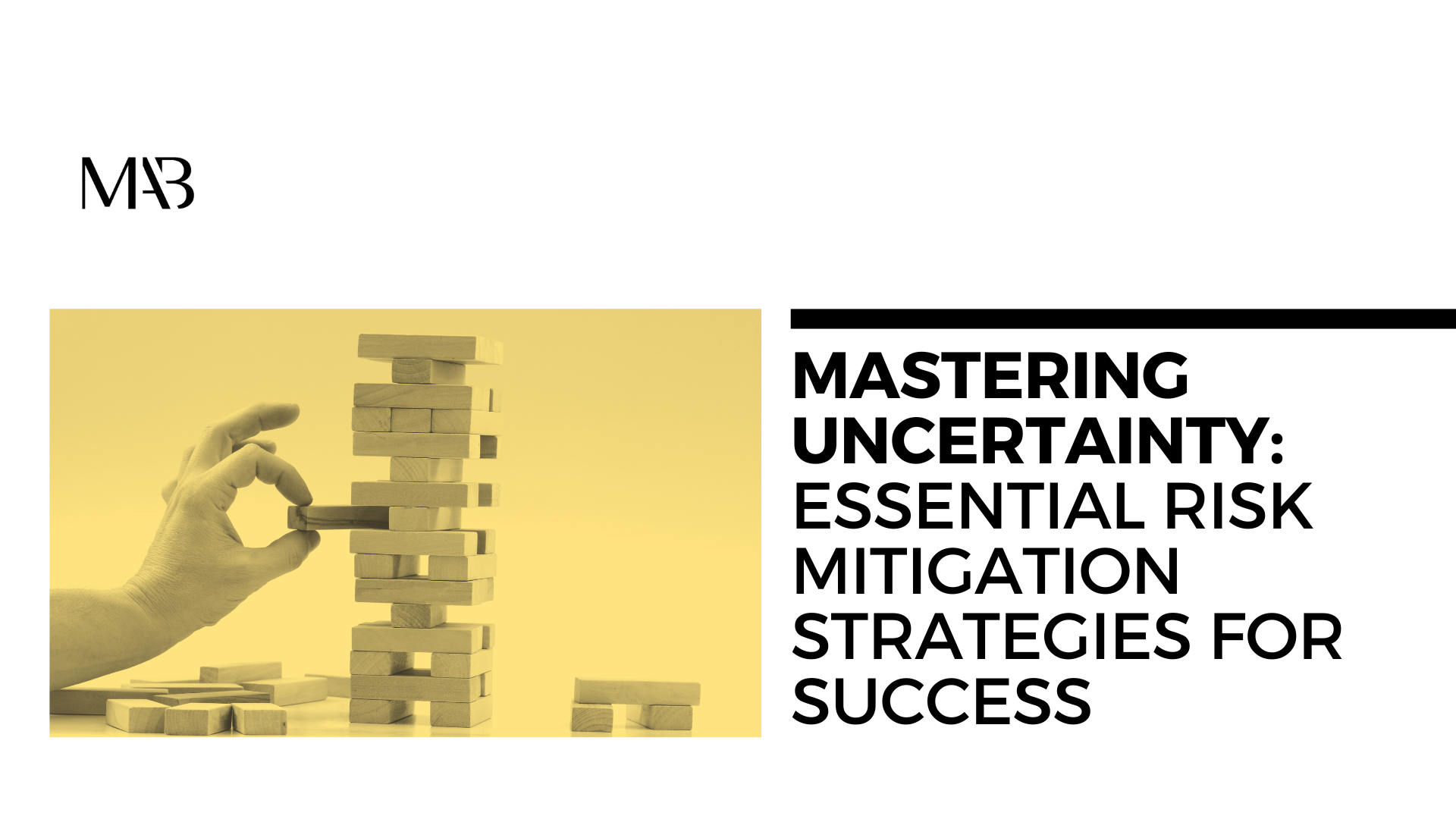Mastering Uncertainty: Essential Risk Mitigation Strategies for Success
In every aspect of life, uncertainty looms large. Whether it’s launching a startup, managing a project, or navigating personal challenges, risk is an omnipresent companion. But here’s the good news: risk doesn’t have to spell disaster. With the right strategies in place, it can be transformed from a potential pitfall into a stepping stone for success. In this blog, we’ll delve into the realm of risk mitigation strategies, exploring actionable approaches to navigate uncertainty and emerge stronger on the other side.

Embrace Proactive Planning
The first step in effective risk management is to embrace proactive planning. Waiting for problems to arise before taking action is a recipe for disaster. Instead, anticipate potential risks and develop comprehensive plans to mitigate them before they materialize. This proactive approach not only minimizes the impact of potential threats but also fosters a culture of preparedness within your team or organization.
Identify and Assess Risks
Before you can mitigate risks, you need to know what you’re up against. Take the time to identify and assess potential risks across all facets of your project or business. This includes financial risks, operational risks, market risks, and more. Once identified, assess the likelihood and potential impact of each risk, allowing you to prioritize your mitigation efforts effectively.
Diversify and Hedge
Diversification is a powerful risk mitigation strategy that applies across various domains, from investments to supply chains. By spreading your resources across multiple assets or suppliers, you reduce the impact of any single point of failure. Similarly, hedging involves taking proactive measures to offset potential losses. Whether through financial instruments, insurance policies, or contractual agreements, hedging provides a safety net against adverse outcomes.
Build Resilience Through Redundancy
In a world of uncertainty, redundancy is your ally. Building redundancy into your systems, processes, and infrastructure can help mitigate the impact of unforeseen events. This might involve redundant IT systems to ensure continuity in the event of a cyberattack, redundant suppliers to prevent disruptions in the supply chain, or redundant staffing to cover key roles during emergencies. While redundancy may incur additional costs upfront, the peace of mind it provides is invaluable when faced with adversity.
Foster a Culture of Adaptability
In today’s fast-paced world, adaptability is key to survival. Embrace a culture of flexibility and innovation within your organization, empowering employees to adapt quickly to changing circumstances. Encourage open communication, collaboration, and creativity, enabling your team to pivot in response to emerging risks or opportunities. By fostering a culture of adaptability, you equip your organization with the agility needed to thrive in an uncertain world.
Continuously Monitor and Reevaluate
Risk management is not a one-and-done endeavor; it’s an ongoing process that requires constant vigilance. Continuously monitor the landscape for new risks and emerging threats, and be prepared to adjust your mitigation strategies accordingly. Regularly reassess your risk exposure and mitigation efforts, ensuring they remain aligned with your evolving objectives and external environment.
Conclusion
Uncertainty is an inevitable part of life, but it doesn’t have to dictate your fate. By embracing proactive planning, identifying and assessing risks, diversifying your resources, building resilience through redundancy, fostering adaptability, and continuously monitoring and reevaluating your strategies, you can master the art of risk mitigation. With these essential strategies in your toolkit, you’ll be well-equipped to navigate the twists and turns of life’s journey and emerge stronger, wiser, and more successful than ever before.

No responses yet